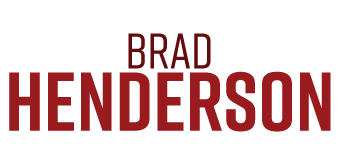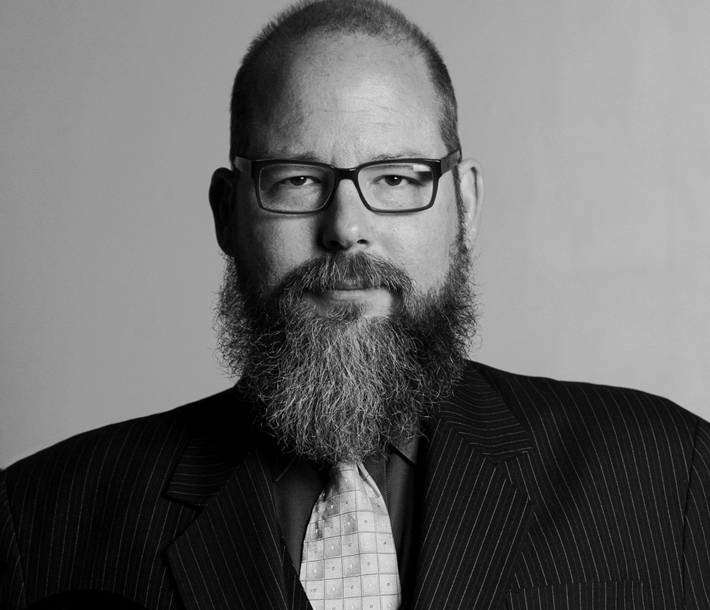Brad Henderson is a real magician.
Based in Austin, Texas, Brad Henderson has traveled the world sharing his unique approach to the magical arts. While others are content to amuse, Brad’s goal is to make his audiences feel, taking them on an emotional journey where surprise, awe, shock, and wonder each have a special moment.
The Early Years
At the age of four, Brad began to study magic but did not get serious about it until age ten when he and a schoolmate took the Hearn Elementary School’s “Big Theater” by storm. He began to perform. Local magic shows led to out-of-town magic shows—which would eventually lead to a magic show in space!
Like many magicians, Brad began his studies because he loved the idea of real secrets in this world. Whether it was Bigfoot, séances, Easter Island, voodoo, or secret societies, Brad was hooked. Visits to local libraries, however, disappointed him. He learned that the published secrets of magic are not that exciting. Was this all there was to the art? Or could there be something more—something perhaps not written in books readily available to the masses. He began to study the history of magic in earnest. Here lay the long lost mysteries of the ages, he thought.
During college, Brad began to assemble his library—which has now become one of the largest and most comprehensive privately-held working libraries on conjuring resources. He dedicated his time to learning as much as possible about the principles of prestidigitation.
Unfortunately, Brad found himself at an impasse. His shows always received peals of laughter and thunderous applause, but something seemed missing. There were too many jokes. It all seemed silly and pointless. Sure, people had fun, but Henderson knew and deeply felt that true magic was far more than momentary amusement.
The Bizarrists
Nearing the conclusion of his undergraduate studies, Brad began searching for a new way to approach magic performance. He became a leader in an alternative branch of magic called Bizarre Magic. The Bizarrists, originally based in England, were a group of magicians who, in reaction to the trivialization of magic as a mere diversion for children, began exploring presentations which suggested occult influences, demonic presences, and ghostly happenings. As a child who loved haunted houses, this spoke to Brad. While the Bizarre school of magic, like many alternative ideas, was first rejected at first by the mainstream magic community, Brad knew the Bizarrists were up to something, so he organized the first Bizarre events ever held at mainstream magic conventions. Eyes were opened and a conversation began.
Brad Henderson then took his skills and applied them to a new type of magic show—one that entertained, but also troubled. One that made you question if what you were seeing was real. One that sent shivers down your spine. Séances became his favorite medium. This led to a reevaluation of what mind reading could be—imagining what was possible when you applied real principles of human psychology with the techniques of the mentalist.
It was also at this time that Brad was exposed to the world of the side show. Fire Eating, the Human Blockhead, displays of regulated regurgitation—Brad was fascinated by them all. He quickly became an expert at several techniques and befriended many of the masters in that field. He would even perform on the street to infuse authenticity into his work.
Mystery School & Beyond
At that time Jeff McBride began an interesting experiment called Mystery School, an invitation-only gathering of people interested in all types of magic. Religious scholars, shaman, card tricksters, clowns—all were welcome here. Unlike most magic gatherings of its day, Mystery School explored the big questions: What is magic? Why is it important? What has changed over centuries, and what endures today? Taking a nod from the Bizarrists, Mystery School was highly participatory. Students went through immersive theatrical experiences of a ritualistic nature, and the worlds of the real magician and the stage magician began to unite once again.
And like the Bizarrists, Mystery School was initially mocked and derided; however, magicians coming out of the Mystery School tradition began to draw attention. There was something different about their magic. There was a substance beyond the trick.
At this point, Brad Henderson began to break off from the Bizarrists. After reading Philosophy In A New Key, Brad realized the secret to impactful magical experiences was the artistic manipulation of symbolic structures. While the Bizarrists attempted to move their audiences by frightening them, Brad realized that other emotions were equally viable. Thus began the self-indulgent years. Brad began exploring the use of symbolism in magic. Many of his pieces produced during this time were entertaining and engaging, but there remained a superficiality that he could not shake. While that’s fine in certain contexts, he knew there must be something more.
Perfecting The Trade
Brad Henderson graduated with his Master’s Degree and began making his living as a full-time magician. These were the commercial years. Relying on his uncanny ability to see through to the essence of an idea, Brad began creating customized presentations for corporate events that even veteran sales people found awe inspiring. One could often find Brad on the trade show floor espousing the greatness of a Fortune 500 company’s product or service to the gathered crowds. Some executives were so impressed, they recruited Brad to share his presentational strategies in customized seminars for their sales and management teams. Brad was truly in his element. He thrived on the challenges of creating and communicating customized messages in clear and impactful packages. He loved working with sales teams, exploring strategies for dealing with difficult customers, or devising highly memorable soundbites that informed and sold.
While Brad was having with these clients, ultimately, he was creating was for someone else. In an effort to return to his own vision, Brad began honing several interactive performance concepts including The Mind Show, The Soirée, and his critically acclaimed hypnosis show, Brad Henderson’s Amazing Humans. In 2006, a key piece of the puzzle presented itself.
Astronauts & Mega Events
At the time, Austin was home to internet gaming pioneer Richard Garriott, who was well-known for utilizing interactive, immersive, participatory theater in his full-scale haunted houses and themed parties. The two shared an interest in magic memorabilia, and eventually they elected to team up and produce Magic at the Manor—perhaps the most interesting, elaborate, and artful magic experience ever staged. It was a rousing success.
With Richard Garriott, Brad Henderson went on to collaborate on several mega events including a full scale alien invasion and abduction for a noted video game release event; a magical wedding ceremony where the bride and groom levitated into the air as they shared their first kiss; and the largest 2012 Mayan Apocalypse party on the planet. It was through these events that Brad’s personal vision came into focus.
Both Richard and Brad realized the incredible power of immersing people in an interactive and imaginative experience. Brad had been a huge fan of Walt Disney before he could even speak. Now, he was given the opportunity to make Disneyland a reality—in his own way. The lessons learned from these experiences gave Brad a perspective most magicians will never have: an understanding of how people truly experience the wonder of something new. He learned how to take a gathering of strangers and mold them into an audience. He discovered how to move that audience through new spaces, both physical and emotional. He understood the importance of creating an experience, in real time for real people, rather than merely replicating something hashed out in one’s practice room.
While thrilled with the opportunities available to him at his time, Brad was still unsatisfied. One afternoon, while walking through the Metropolitan Museum of Art’s contemporary art collection, it dawned on him—all the other arts are so rich in variety that magic seems thin in comparison. The other arts had abstraction and experimental movements, but magicians were still performing the same tricks in the same ways. Why?
Going Forward
That’s when Brad realized that in order for magic to advance, we must look to the other arts to understand what is possible and consider if those things are possible for magic. Influenced by Marcel Duchamp, Suzanne Langer, the Surrealists, and contemporary artists, Brad has embarked on a new approach to magic—one that privileges the expressive content of a piece that manifests in an emotional journey for the audience. He is exploring how to approach magic as a real performance art, not just a replication of clever moves intended to amuse.
Brad believes the goal of the magician is to make the audience feel, and feel as deeply as possible. The performer who imparts the greatest depth of feeling to their audience becomes the real magician against whom all other magicians are measured. The duty of the artist is to use all available resources to convey this depth of feeling. It is an approach which values the audience as intelligent and important contributors to the event—an approach focused on the needs and experience of the audience. It is an approach that treats magic as important and real. It is an approach you will never forget.
Brad Henderson has been teaching magic for over 26 years, specializing in lessons for amateurs and interested non-magicians. He has written for many respected magic publications including MAGIC magazine, Genii, MUM, and The Linking Ring, and several others. He has consulted on numerous projects including Michael Ammar’s Easy to Master Card Miracles and Easy To Master Money Miracles, Ammar’s The Complete Cups and Balls, Bob Farmer’s Bammo Ten Card Deal Dossier, Jon Racherbaumer’s M.O., ABC Family’s Exploring the Unexplained, Mattel’s line of Harry Potter Magic Toys, the MIT Blackjack Team, TLC’s Mysterious World of Alain Nu, History Channel’s Lost Magic, and was a noted participant in the recent documentary, Our Magic. He was a facilitator at Jeff McBride’s Mystery School and often contributes to their monthly publications.

